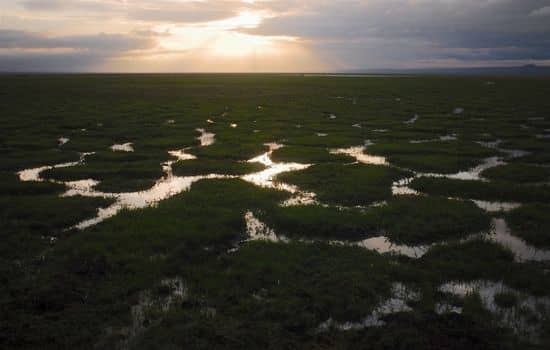Advertisements
The planet is home to the most varied ecosystems, ranging from places suitable for life to the most inhospitable.
From lush rainforests with their vibrant wildlife to beautiful coral reefs, these areas are teeming with life and beauty.
Advertisements
The richest of these ecosystems are vitally important to the health of our planet, as they are home to a vast array of species and resources.
The world's most diverse ecosystems are among its greatest treasures, from the lush rainforests of the Amazon to the coral reefs of the Caribbean.
Advertisements
SEE ALSO
Application that shows images of other lives you have lived
ATLANTIC FOREST AND ITS CHARACTERISTICS
These natural wonders are home to an incredible variety of flora and fauna, all of which contribute to a healthy planet.
See Also:
But what makes these places so rich? What sets them apart from other habitats?
In this article, I will talk about some of the richest ecosystems on the planet and discover why they are so unique and valuable.
The ecosystem of Europe
Europe is home to a multitude of diverse and vibrant ecosystems, ranging from lush forests and grasslands to vast oceans.
Its varied landscape provides the perfect environment for an abundance of plant and animal species, resulting in some of the most diverse habitats on Earth.
Examples include the majestic fjords in Norway and the Mediterranean islands off the coast of Portugal.
Europe's vast variety of ecosystems is home to numerous endemic species that cannot be found anywhere else in the world.
In addition to its impressive array of native wildlife, Europe also offers spectacular natural sights.
Europe's landscapes provide an ever-changing backdrop for those seeking adventure or solace from everyday life.
North American Ecosystem
This ecosystem is a complex web of interconnected and interdependent species, habitats and ecosystems.
A region that has deserts, coniferous forests and meadows is home to the most diverse animals.
They are grizzly and black bears, wolves, bison, elk and white-tailed deer, alligators and snakes, frogs and salamanders.
Also a wide variety of insects such as butterflies and fireflies and freshwater fish from trout to carp.
South American Ecosystem
South America has one of the most diverse and exuberant biomes on the planet.
With its vast deserts, rainforests and mountain ranges, it offers a wide range of habitats for its native species.
Varieties ranging from the Andes to the Amazon basin.
The diversity of life in this region has created a thriving ecosystem with many different components working together in harmony.
The Amazon rainforest alone contains more than 10 percent of all known species, one of the richest areas on Earth in terms of biodiversity.
Africa Ecosystem
Africa has some of the richest ecosystems on the planet, ranging from the vast savannas of East Africa to the lush tropical forests of Central Africa.
And each ecosystem offers its own unique variety of flora and fauna.
With over 750 species of mammals and over 2,000 species of birds, and numerous endemic species found nowhere else in the world.
These habitats provide a multitude of benefits, providing food, resources for local communities and even shelter.
In addition to being one of the oldest ecosystems on Earth.
Each habitat has its own unique adaptations that have allowed them to survive despite climate changes throughout history.
The vegetation is made up of tropical forests full of wildlife.
Central American Ecosystem
Central America has a very rich ecosystem, with its many volcanoes, rainforests, swamps and coral reefs.
The lush landscapes are also home to an incredible variety of species, from mammals and amphibians to reptiles and birds.

Central America's diverse habitats offer numerous benefits to wildlife.
For example, these habitats provide food and shelter for a wide variety of animals, including endangered species such as jaguars, monkeys and sea turtles.
Additionally, they help protect the environment by capturing carbon dioxide from the atmosphere, which can be converted into oxygen by plants.
This process helps combat climate change while simultaneously providing essential resources for humans.
The ecosystemthe one from Oceania
Oceania is home to some of the most diverse and spectacular ecosystems in the world.
Encompassing Australia, New Zealand, Indonesia and many neighboring islands, Oceania offers a wide variety of habitats, from coral reefs to temperate rainforests.
From its tropical rainforests and diverse coastal wetlands to its subtropical grasslands and dry savannas, it provides habitat for countless species of plants and animals.
Asian Ecosystem
The Asian ecosystem is an incredibly complex and diverse ecosystem that is home to a wide variety of animal and plant species.
Comprising vast jungles and rainforests to snow-capped mountains and sprawling deserts, the continent boasts a wealth of ecological wonders.
In addition to the variety of species such as elephants, rhinos, insects, bees and butterflies.
Conclusion about the Planet's ecosystems
The planet's ecosystems are incredibly diverse and each contributes to the overall health of our environment.
A recent article analyzed which are the richest ecosystems on the planet and what we can conclude from them.
From this research, it is evident that biodiversity is essential for a healthy ecosystem.
It is also clear that both natural and man-made threats can have devastating effects on species and habitats around the world.
Therefore, it is important that we are vigilant in our actions to ensure that these precious ecosystems are not destroyed or degraded in any way.
We must work together to protect these important communities so they can continue to thrive now and in the years to come.
